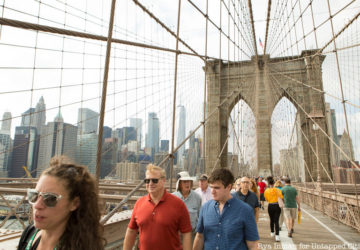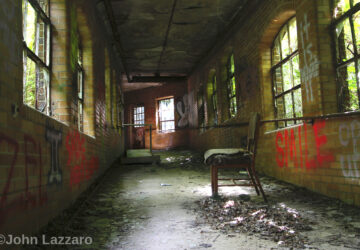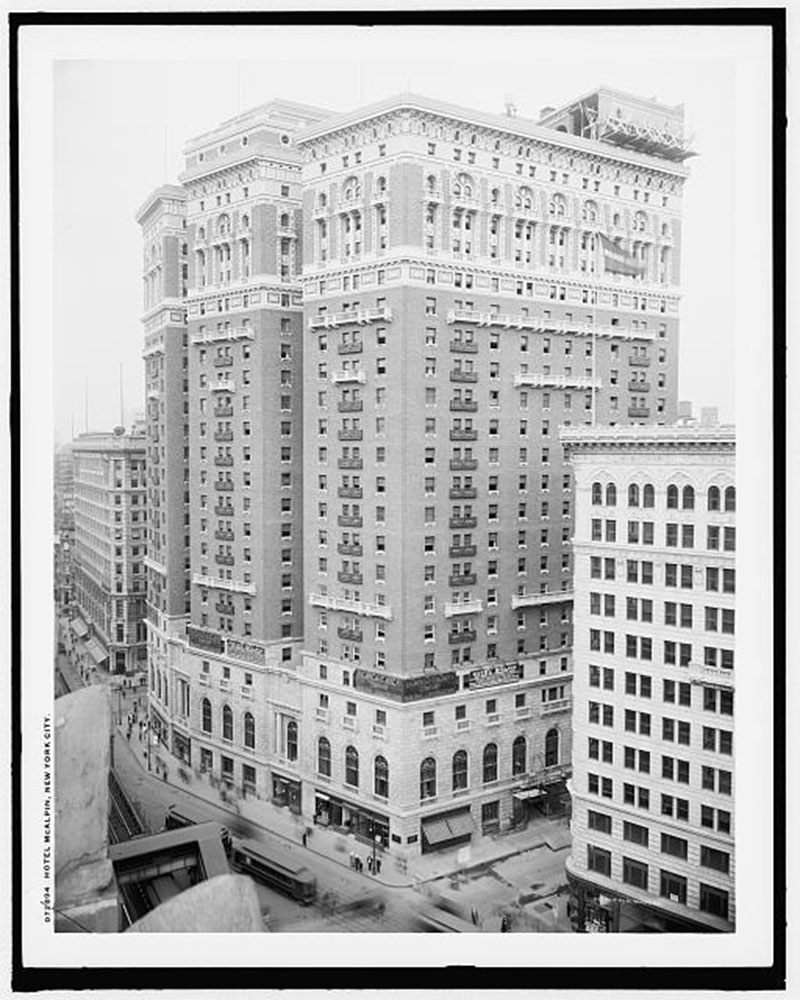 Image via the Library of Congress
Image via the Library of Congress
In our continual investigation into New York City’s lost or forgotten structures, we’ve come across former hotels, obsolete sporting venues and derelict movie theaters. Our appreciation for superlatives, however has brought us back again to Hotel McAlpin, once the largest hotel in the world.
We’ll delve into a bit of its history on our upcoming walking tour of NYC Subway Art, which kicks off this weekend on May 13th.
Behind-the-Scenes Tour of NYC Subway Art
In the meantime, we’re taking you back in time to the glory days of the McAlpin, which opened in 1912 on corner of 34th Street and Broadway Square in Herald Square.
Today, the building that formerly housed the hotel operates as an apartment complex, known as Herald Towers. In its hey day, however, the luxurious 25-story and 1,500-room McAlpin — designed by architect Frank Mills Andrews and established by General Edwin Augustus McAlpin, the president of the D.H. McAlphin & Co. tobacco company — boasted a staff of 1,500 people, with the capacity to accommodate 2,500 guests. In total, the building cost $13.5 million to construct, which translates to roughly $335 million today when adjusted for inflation.
Along with the hotel’s massive Turkish bath and plunge pool, which took up the entire 24th floor, it featured a tapestry gallery, an in-house orchestra and a fully-equipped hospital that was “outfitted with every modern appliance known to surgery.”
It also housed two gender-specific floors: the sixth was reserved for “unaccompanied women” to ensure that they were not being harassed. Hotel employees on this floor were all female and a separate check-in desk allowed guests to navigate around the main lobby; the range of amenities here included a playground for children, a library and a hair dressing salon.
Perhaps one of McAlpin’s most notable fixtures was its restaurant, the Marine Grill, located in the basement of the building. While the food has been described by Kent Barwick, the former president of the Municipal Art Society, as “unspeakable,” the restaurant interior was highly regarded as an “architectural and decorative triumph.”
The New York Times, in highlighting the “unusual” interior, states the following:
The Marine Grill is a forest of tile-clad piers that curve up and form great curved vaults, all in a glazed riot of ornament and color – brown, green, cream, silver and scarlet.
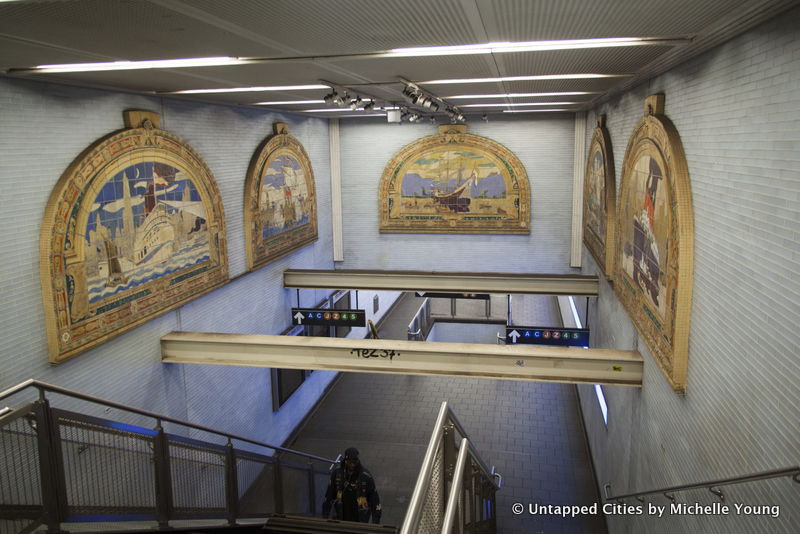
The restaurant’s decorative centerpiece was a series of 20 terra cotta murals, designed by Frederick Dana Marsh in 1913, and fabricated by the Atlantic Terra Cotta Company of Staten Island. Together, the works revealed major moments in New York City’s maritime history from Henry Hudson’s arrival to New York Harbor to Robert Fulton’s steamship, the Clermont. In fact, these pieces were so celebrated that the restaurant was renamed “Marine Grill” in their honor.
By the 1970s, however, the grand McAlpin was sold to a developer who converted the building into 700 rental apartments (now under the name Herald Towers). The murals were consequently tossed into nearby dumpsters — where they would have been lost to time had it not been for Susan Tunick, the president of the non-profit Friends of Terra Cotta, who alerted the New York Landmarks Preservation Committee; the fragments were later given to MTA’s Arts for Transit Program and reassembled piece-by-piece by a group of college interns.
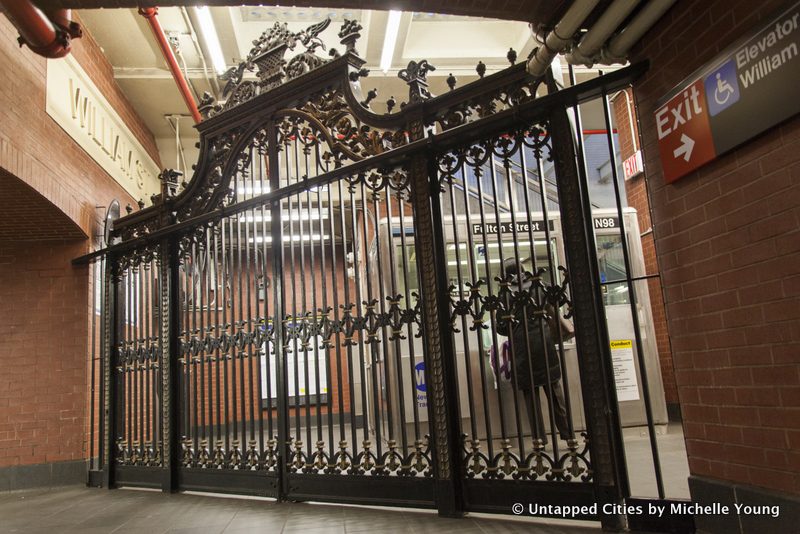
In 2000, six of the restored murals and the restaurant’s cast-iron gate were installed in the passageway of Fulton Street/Broadway-Nassau station; they were removed in 2009 due to the construction of the Fulton Center project, and later reinstalled at the Williams Street entrance in 2011, where they still sit today. As for the Marine Grill itself, it shuttered in 1989 and the space has since been converted into a GAP store.
To see remnants of Hotel McAlpin, join us for our Art in the NYC Subway tour, kicking off this weekend, May 13th:
Behind-the-Scenes Tour of NYC Subway Art
Next, check out the Cast Iron Gate from Herald Square’s Hotel McAlpin and 10 of NYC’s Lost Hotels. Also read about the transformation of the Fulton Center.

